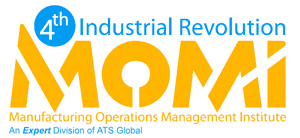
Trends and Observations
In the past, laboratories were perceived as black boxes: you bring them samples and you get quality results back. Currently management of manufacturing companies wants from quality, like from the rest of the organization, visibility and openness. Software solutions will assist in this openness and in the need for integration with other operational solutions like ERP, MES and WMS.
Therefore, LIMS will have the following basic process structure: identify samples (instruct where to take samples and how to label), manage the test plan, plan the execution of the samples, manage the resources for this execution, connect to measuring equipment, track the execution of the sample tests and report the result.
When investigating the business case for LIMS, it becomes clear that many non-production or product related processes are part of LIMS/ELN and not of MES/ERP/WMS/excel.
Some examples of the observations from the information provided by the participating vendors to the MOM Solution Guide 2021- LIMS/ELN are:
- The go-to-market strategies of the participating LIMS/ELN vendors is varying. Some of them are targeting Production and QC labs only. Others are providing their LIMS/ELN solution for more generic application in multiple types of laboratory environments.
- The most ‘popular’ industry sectors are Fine Chemicals and Food & Beverages with all of the participants focusing on these sectors followed by (Bio)Pharmaceutical (83%). In general, the participating vendors are focusing primarily on batch industries.
- All LIMS/ELN solutions in this Guide are suited for inclusion in a ‘21CFR part 11’ audit. However, for two third of the solutions only, a validation dossier is available. Both at the project stage when new solutions are deployed and validated, and during the lifetime of the solution, it can be valuable to have such dossier especially when software updates are required and issued.
- Most of the solutions can run in a browser on any device because of the use of HTML5. Maybe coincidentally, but all these solutions can be hosted in the cloud as well. It shows that the vendors are preparing for the future consistently.
- Two third of the participating vendors did apply OPC UA (Unified Architecture) for the deployment of their solution, while MQTT (Message Queuing Telemetry Transport) is used by only 17% of them. Both OPC UA and MQTT are seen as important interfacing standards for future architectures (Industry 4.0).
- From other standards for formatting the data which need to be exchanged between LIMS/ELN and other applications, HL7 is an option for half of the solutions, while B2MML and BatchML are supported by one third of the participants.

Here you can order the
MOM Solution Guide 2021 – LIMS/ELN.
